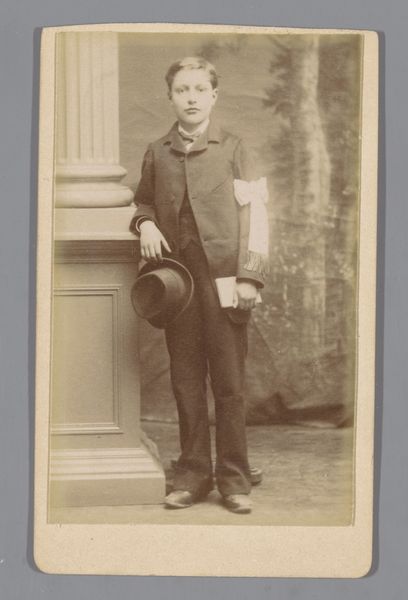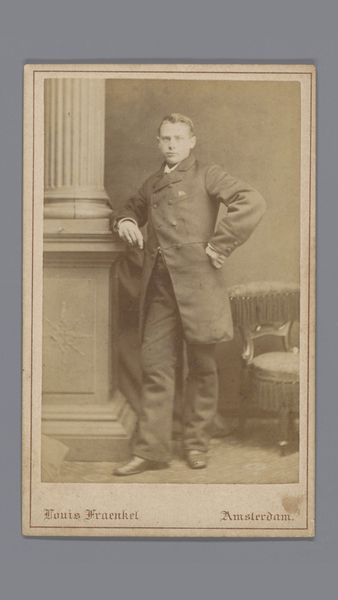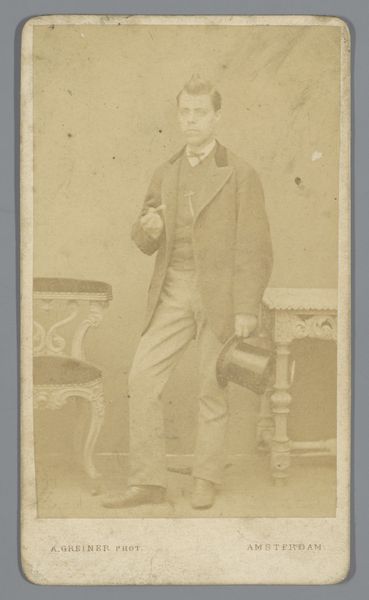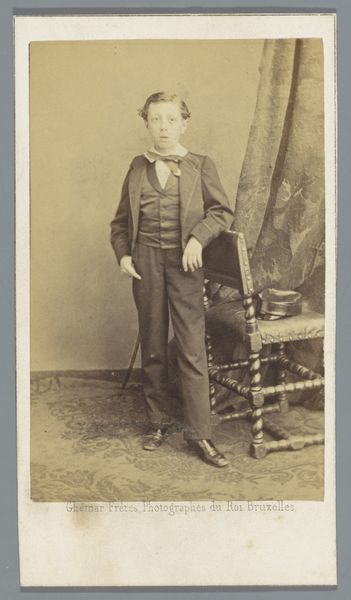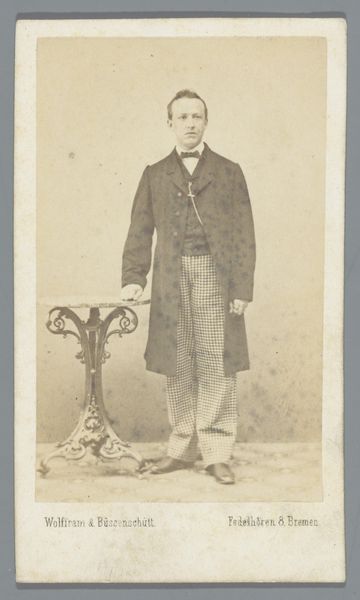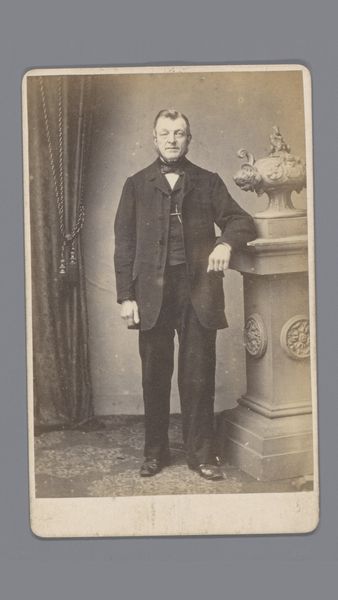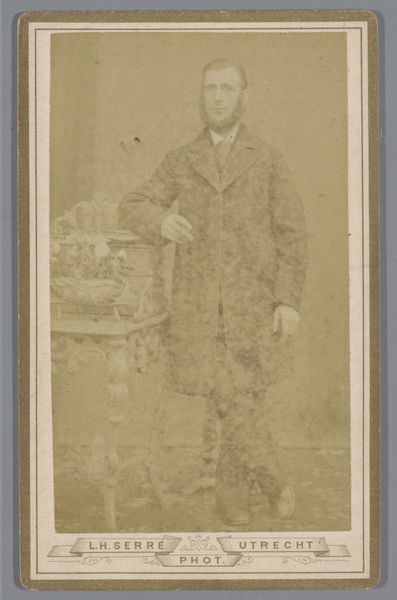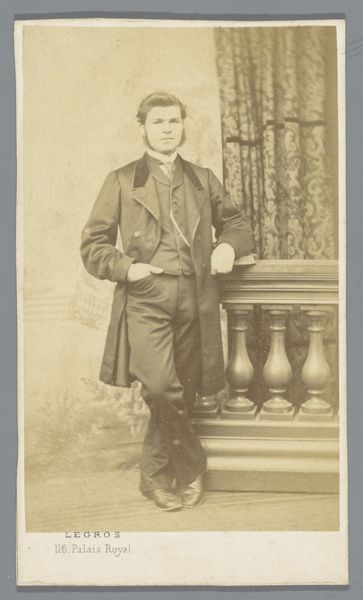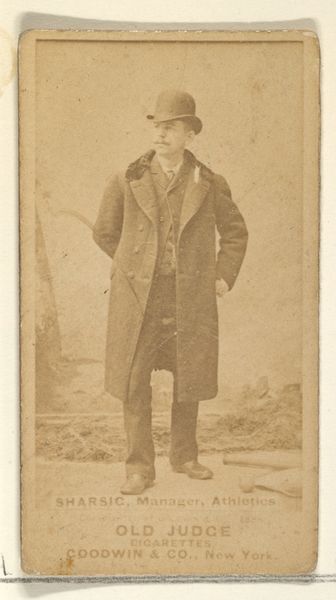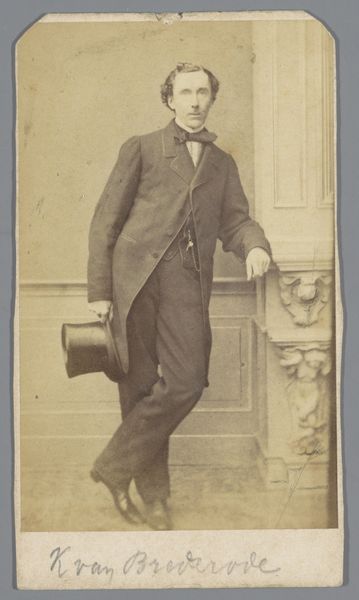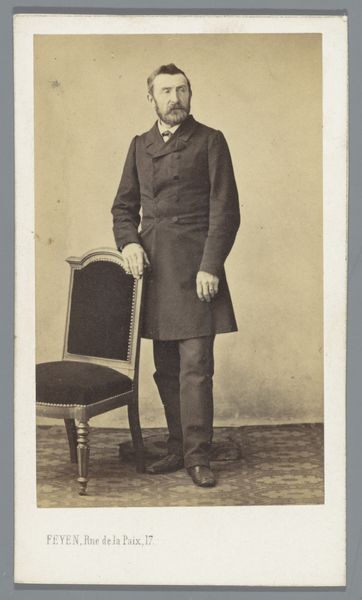
photography, gelatin-silver-print
#
portrait
#
photography
#
framed image
#
gelatin-silver-print
#
genre-painting
#
paper medium
#
realism
Dimensions: height 104 mm, width 64 mm
Copyright: Rijks Museum: Open Domain
Curator: Looking at this gelatin silver print, what strikes you first? Editor: Well, the melancholy of it. There’s something about the sepia tones combined with the boy’s expression and formal attire that evokes a strong sense of bygone innocence and the constraints placed upon children in that era. Curator: That’s a keen observation. What we have here is titled, “Portret van een onbekende jongen,” or "Portrait of an Unknown Boy". The photographer was Johannes Baer, working between 1871 and 1891. It's currently held in the Rijksmuseum collection. Thinking about its production, these photographic portraits were a burgeoning industry in the late 19th century, allowing a wider range of social classes access to a type of personal representation previously reserved for the wealthy. Editor: Exactly. Access to visual representation is key, but so is understanding its coded nature. Consider the pose: formal, yet seemingly relaxed against the balustrade, a backdrop designed to convey status. Who was this child, and what narratives about masculinity and class were being reinforced through this carefully constructed image? Curator: Right. The materiality is essential here. The gelatin silver process allowed for sharper images and greater reproducibility. This is no longer a unique object like a painted portrait; it is designed to be reproduced, circulated, consumed. And look closely – it's a framed image, underscoring its value as both a commodity and a keepsake. Editor: It also speaks to notions of public versus private. Was this intended for personal family viewing, or meant to project an image of success to a wider circle? The very act of commissioning a portrait reflects participation in specific cultural values and norms of that period. I wonder what implications such structured expectations may have placed on this anonymous subject? Curator: Considering the context of its production, it reveals not only how photography democratized image-making, but also the material and social forces shaping photographic representation during the Industrial Age. It is amazing how Baer managed to negotiate commercial opportunity and portraiture so skillfully. Editor: And ultimately, for me, it sparks questions about individual agency, societal pressures, and the stories we weave around these images across time. It really reminds you that these representations are anything but neutral. Curator: Indeed. There's much to be gleaned from the processes that produce what seems, at first glance, like a simple portrait. Editor: A poignant reminder that every image, even a small, forgotten portrait, is layered with complex cultural meaning.
Comments
No comments
Be the first to comment and join the conversation on the ultimate creative platform.
